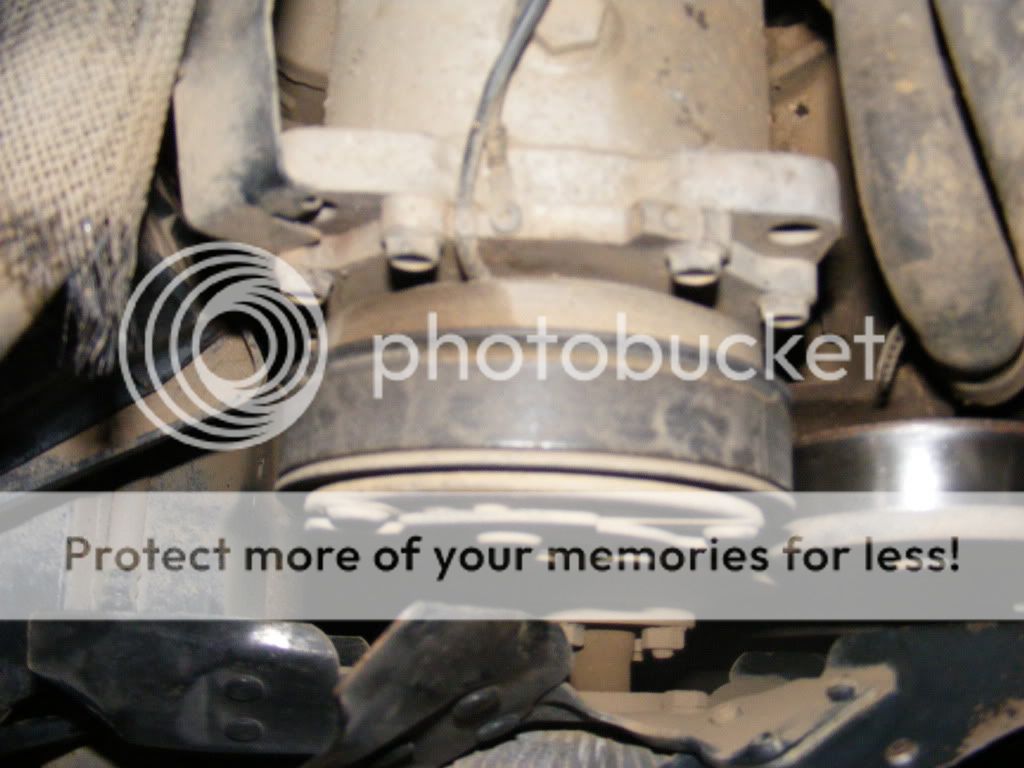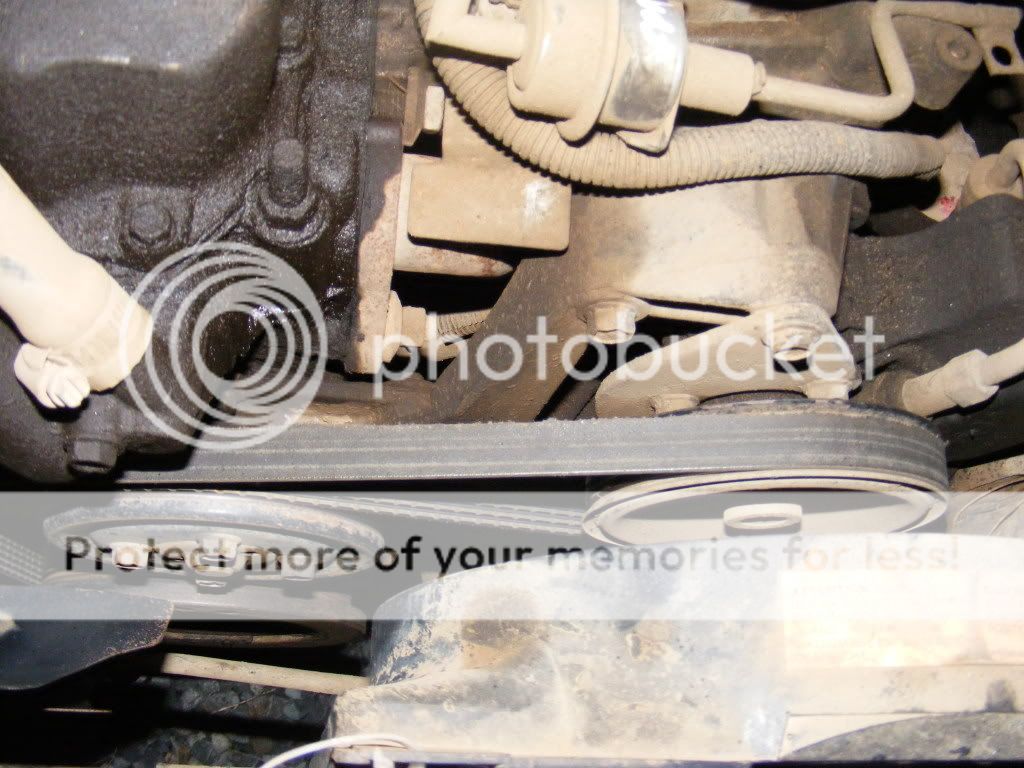OK - by "inside" I take it you're referring to the engine-side edge of the belt, yes? Typically, "inside" refers to the ribbed side, and "outside" to the smooth back. "Front edge" and "back edge" are referring to the belt as mounted.
If you look at your second picture, you see two pullys one atop the other on the left. The big honkin' pully on the bottom is the harmonic damper, and it looks like it's starting to separate. A quick test is to take a covenient straightedge and lay it across the front of the pully - the hub and the ring should both be touching the edge, or close to it (1/16" or so.) It looks like the ring on yours is "walking out" - meaning that the rubber ring between the hub and ring has started to wear, and is allowing the parts to move relative to each other. This would account for the wear on your belt - since that would stress and abrade the back edge (as mounted.)
You're going to have to replace that pully. It can be done with hand tools in an after-noon, but you might want someone who has done the job before to help you, if you haven't done it on your own. A few things to bear in mind:
1) Replace the seal behind it while you're there, or you'll be kicking yourself good and hard when it fails in a month or so.
2) You'll need a puller to get the damper off.
3) Thou Shalt Not hammer thy new harmonic damper in place! Get a batch of 1/2"-20 screws (about 1-1/2" to 3" long) and washers - you're going to use these to gently drive the damper in place. Lubricate the snout of the crankshaft and the bore of the damper with never-seez - since a Woodruff key is used to maintain alignment, it's just to make installation and removal easier.
The new damper is driven on the final stretch by the OEM snout screw - dip it in oil (or coat it in grease) and torque to 80 pound-feet. Make sure to use the thick hardened washer under the screw head.



